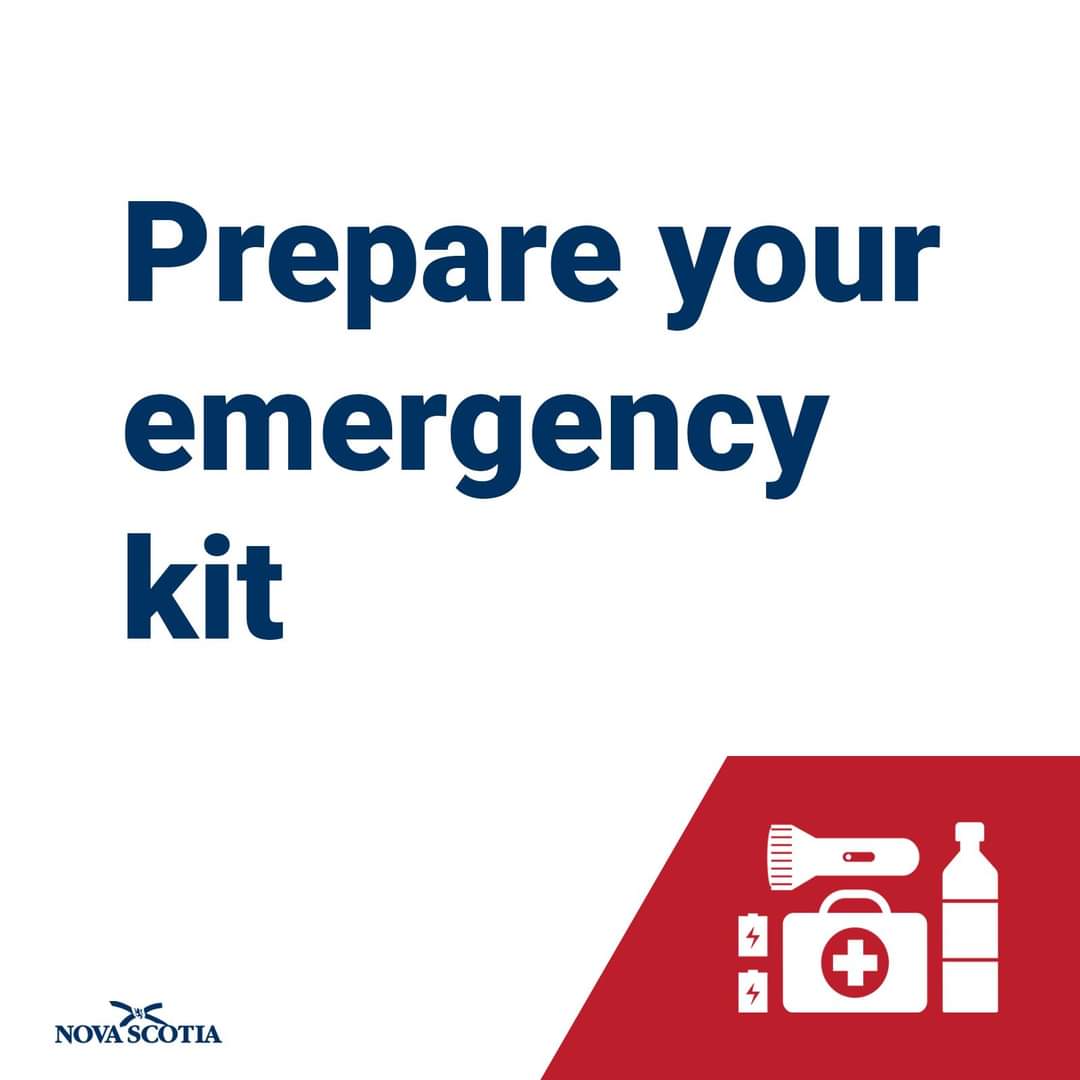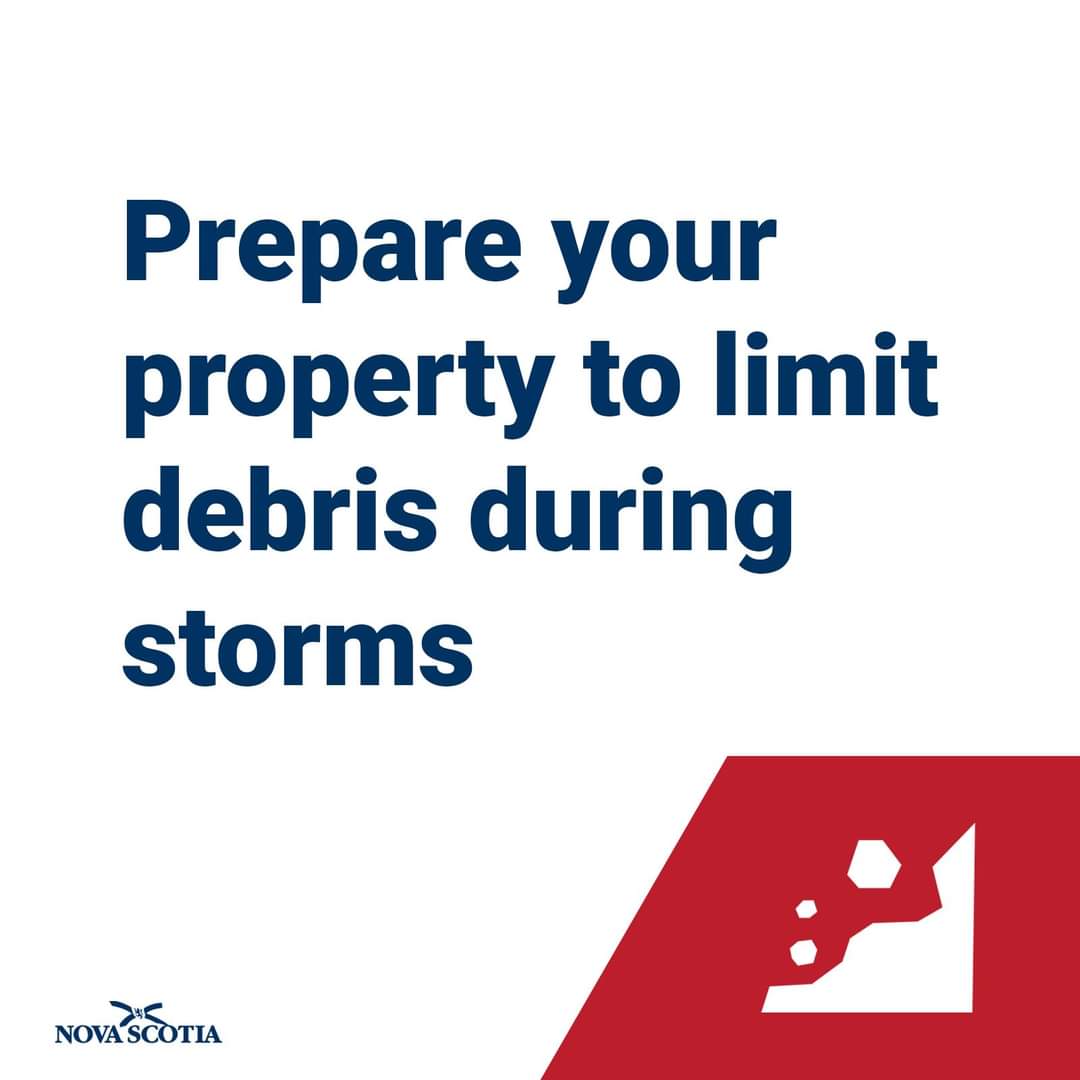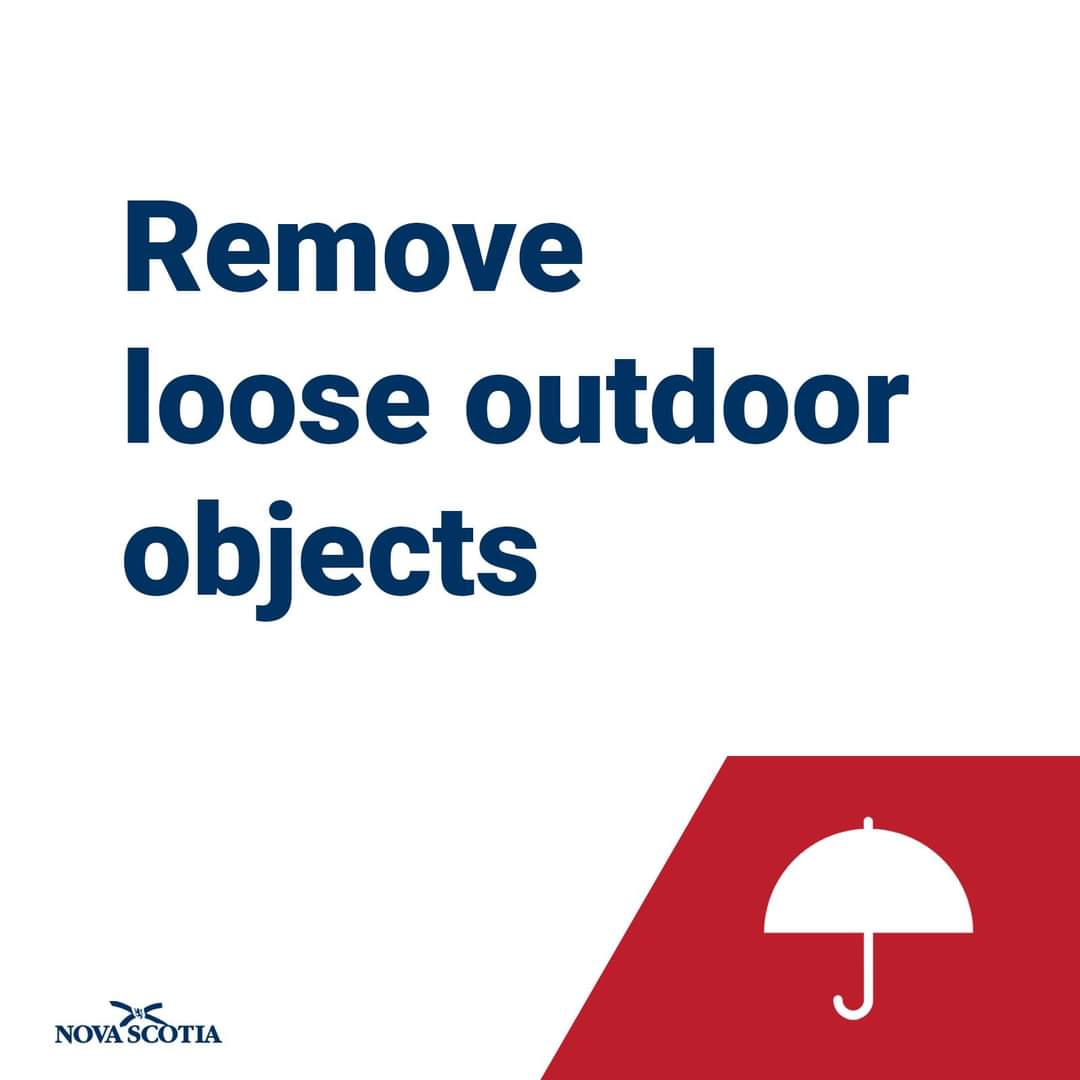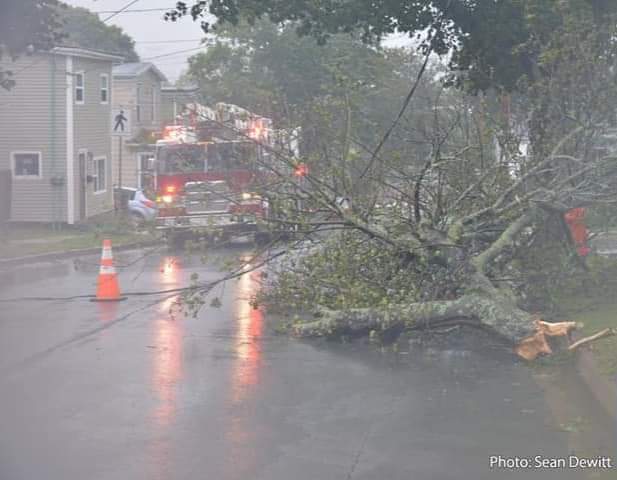**** EMO Release
EMO – Helping Nova Scotians Prepare for Hurricane Season
——————————

Nova Scotia is entering the height of hurricane season, and now is the time for residents to prepare for these extreme weather events.
To help with this, the Province is launching an awareness campaign with advice and information people can use to protect themselves and their properties before a hurricane or tropical storm happens.

“I know we’re all feeling weather-weary, but hurricane season is upon us,” said Municipal Affairs and Housing Minister John Lohr, Minister responsible for the Emergency Management Office. “The best time to plan and prepare is before a hurricane or tropical storm occurs. Taking steps now to make an emergency plan and kit will ensure you and your family, friends and neighbours are ready before a storm reaches our province.”
A hurricane’s strong winds and heavy rain can cause power outages, storm surges, flooding and property damage. People can get ready in advance by:
— having an emergency kit with food, water, medications, important documents and supplies to last for several days
— preparing property by trimming trees, securing loose items, and clearing gutters and storm drains
— making a plan for their families now, before one is needed.
The awareness campaign will include radio, print and online ads over the next four weeks.
Environment and Climate Change Canada is warning of an active hurricane season this year and reminding Nova Scotians to closely monitor the WeatherCAN mobile application, the website https://Canada.ca/weather or its other weather channels for official hurricane alerts.
Quick Facts:
— hurricane season runs from June to November, with Nova Scotia experiencing peak storm activity in late August and September
— municipalities are responsible to have an emergency management plan in place and would lead the response to events in their areas
— Nova Scotia’s emergency management office works with municipalities to help them plan for emergencies and supports response efforts when major events happen

Additional Resources:
Updates and tips from Nova Scotia’s emergency management office are available at:
— website: https://novascotia.ca/Alerts
— Facebook: https://www.facebook.com/Emerg
— X (formerly Twitter): https://twitter.com/nsemo
.
**** HRFE Release
Hurricanes
Municipal Service Level Adjustments
To learn more about municipal service level adjustments during a hurricane, visit our severe weather events web page.
Any municipal service level adjustments, including transit, solid waste collection and parks and recreation, will be communicated to the public with as much advanced notice as possible.
Safety is the municipality’s top priority. The municipality’s Emergency Management Division continues to monitor weather forecasts and will work closely with provincial partners, including NS EMO, to respond to and mitigate potential impacts of the forecasted severe weather event.
Storm Preparedness
Hurricane season officially runs from June through November when the waters of the Atlantic Ocean are warm enough to form tropical cyclones.
One of the most destructive effect of a hurricane is the storm surge, often causing serious flooding. Due to high wind speeds, prolonged power outages often occur and can impact resident safety.
Follow storm warnings and weather forecasts through Public Weather Alerts Canada.
Register for hfxALERT, the municipality’s mass notification system to receive urgent and non-urgent public alerts by phone, email or text. Sign up here.
Before
- The key to staying safe is to prepare and to have an emergency plan in place.
- Stock up on water, ready-to-eat food and heating fuel, as well as battery-powered or wind-up flashlights and radios – and extra batteries. Find a complete list of supplies for an Emergency Kit
- Make sure that there is gasoline in the car.
- Listen to local news and weather reports for any potential hurricane watches and warnings in your area.
- Trim dead branches and cut down dead trees to reduce the danger of these falling onto your house .
- If you live on the coast or in a low-lying area near the coast, be ready to move inland or to higher ground. High winds can create large waves, which may become storm surges when they reach the shore.
- Be prepared for power outages
During
- Be prepared to evacuate at a moment’s notice.
- Listen for reports from authorities on your crank or battery powered radio.
- Stay informed by listening to the latest warnings and advisories. Tune in to the radio or local news channels, and/or follow us on social media @hfxgov
- You can also find information on the Canadian Hurricane Centre website .
- Secure everything on your property that can be blown around or torn loose.
- Close windows, doors and hurricane shutters. If you do not have hurricane shutters, close and board up all windows and doors with plywood.
- Turn around – don’t drown! Avoid walking and driving through flooded areas.
- Never go out in a boat during a storm. If you are on the water and you see bad weather approaching, head for shore immediately.
- Do not go down to the water to watch the storm. Most fatalities during hurricanes occur as a result of being caught in large waves, storm surges or flood waters.
- Evacuate if advised by authorities or community leaders. Be careful to avoid flooded roads and washed out bridges.
- if you are trapped or injured call 911
- If the eye of the hurricane passes over, there will be a lull in the wind lasting from two or three minutes to half an hour. Stay in a safe place on the main floor but not in the basement during this time. Remember once the eye has passed over, the winds will return from the opposite direction.
After
- Continue to take precautions and listen to and follow directions from local authorities.
- Tune in to the radio or local news channels, and/or follow us on social media. @hfxgov @hfxmoments
- Stay alert for extended rainfall and subsequent flooding even after the hurricane or tropical storm has ended.
- Individuals who encounter or experience flooding should contact 311. Calls will be assessed and re-directed accordingly.
- If you suspect your home is unsafe, do not enter. Rely on the professionals to clear your home for re-entry, if you are unsure.
- Stay away from damaged areas and fallen power lines. Watch out for debris such as sheet metal, glass or other sharp material.
- You shouldn’t try to remove or trim branches near a power line. If a tree or tree limbs have fallen on a power line or pulled it down, keep a safe distance from the line or the tree and call 911!
- Do not use water that may have been contaminated. Throw out food that may have been contaminated, including from refrigerator and freezers.
- Wear long pants, a long-sleeved shirt and sturdy shoes when cleaning up.
- Examine your walls, doors, staircases, and windows for damage.
- Take pictures of damage, both building and its contents, for insurance claims.
- Check with local authorities on how to properly dispose of damaged items from your home.
Mobile homes
If you live in a mobile home:
- Position your mobile home near a natural windbreak such as a hill or clump of trees.
- Anchor the structure securely. Consult the manufacturer for information on secure tie-down systems.
- When a severe storm approaches, seek shelter in a more secure building as staying in a mobile home during a hurricane can be more dangerous than going outside




